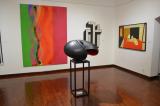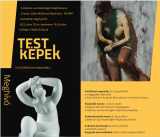In the spring of 2023, the Ferenczy Museum Center of Szentedre will present an oeuvre exhibition entitled THE COLLECTION (1900-2022). Szentendre, as one of the main centres of Hungarian modern art, has shaped artistic trends for decades, while also maintaining a dialogue with the national and international art scene. The primary focus of FMC’s art collection is Hungarian contemporary fine and applied art, with particular emphasis on the 20th and 21st centuries. In this category, it is one of the largest and most prominent art collections in Hungary.
The exhibition will showcase outstanding works of art that have not been displayed for a long time, as well as a selection of new acquisitions. Works will also be featured by some of today’s most notable contemporary artists, including Tamás Kaszás and Zoltán Szentirmai, as well as such prominent figures of the 20th-century Szentendre art scene as Jenő Barcsay, Endre Bálint, Béla Czóbel, Pál Deim, members of the Ferenczy dynasty (Károly, Noémi and Béni), Dezső Korniss, János Kmetty and Lajos Vajda. There is a special section where art from members of Szentendre’s Lajos Vajda Studio will be on view.
Newspaper articles and videos, as well as further reading and interesting facts accessible by QR codes, help visitors delve deeper into the different periods. The texts for the videos were written by István Kemény, winner of the Attila József Literary Prize.
The exhibition will simultaneously present paintings, sculptures, installations and video works, while new conceptual spaces will also be created by drawing surprising connections between certain works. Our aim is to move away from the traditional, art historical theme- and “ism”-based classification typically employed by museums, offering instead a wealth of new discoveries and unexpected connections.
By periodically rearranging the exhibition, we seek to reflect not only the depth and richness of the Museum’s collection, but also an approach that allows for discovering and connecting the histories of visual art, local history, literature, ethnography and archaeology in myriad ways. To this end, in collaboration with our Museum Education Department, our aim is to also involve the younger generations and encourage them to play an active role.




